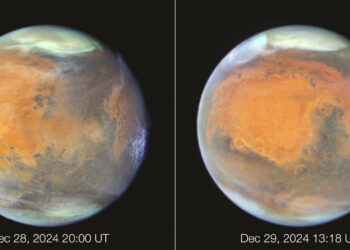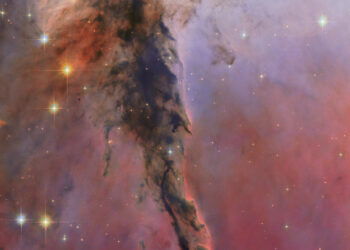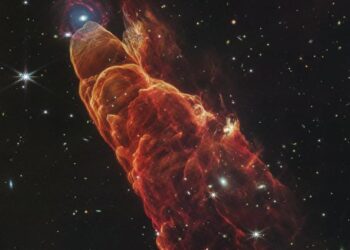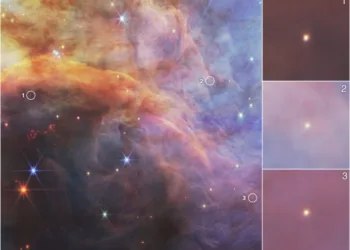This intriguing image might resemble a dividing cell or even a brain, but it’s neither of those. In reality, it’s a space nebula situated 1,500 light-years away, affectionately dubbed the Crystal Ball Nebula, or more formally known as NGC 1514. The captivating form of this celestial object was shaped by the dramatic life cycle of a dying star.
The James Webb Space Telescope has captured this remarkable image, revealing the nebula’s features in unprecedented detail. Before this, the nebula was observed in 2010 by researcher Mike Ressler of NASA’s Jet Propulsion Laboratory using a NASA telescope called the Wide-field Infrared Survey Explorer (WISE). Recently, Ressler revisited the nebula with the advanced capabilities of Webb’s Mid-Infrared Instrument (MIRI), which unveiled a series of fuzzy rings visible only in infrared wavelengths, alongside some voids nearer to the center of the nebula.
“Before Webb, we weren’t able to detect most of this material, let alone observe it so clearly,” Ressler remarked. “With MIRI’s data, we can now comprehensively examine the turbulent nature of this nebula.”

NASA, ESA, CSA, STScI, NASA-JPL, Caltech, UCLA, Michael Ressler (NASA-JPL), Dave Jones (IAC)
The unusual shape of this nebula is the result of a binary star system at its core. One star in this pair exhausted its fuel, expanded, and expelled layers of gas and dust, eventually leaving behind a hot core known as a white dwarf. This white dwarf emits fast, faint emissions of material called stellar winds, influencing the surrounding material. Researchers believe that this stellar wind, interacting with the other star in the pair, is responsible for the distinctive hourglass shape and the formation of the two bright rings.
“When this star was at its peak of losing material, the companion could have gotten very, very close,” explained David Jones from the Institute of Astrophysics in the Canary Islands, who has been studying this system. “Such interactions can produce unexpected shapes, leading to these rings instead of a simple spherical structure.”
Thanks to Webb’s observations, it’s clear that the rings are not solid; they have a fuzzy appearance and vary in thickness. “We believe the rings are primarily composed of very tiny dust particles,” Ressler noted. “When these grains are illuminated by ultraviolet light from the white dwarf, they heat slightly, making them detectable by Webb in mid-infrared wavelengths.”





